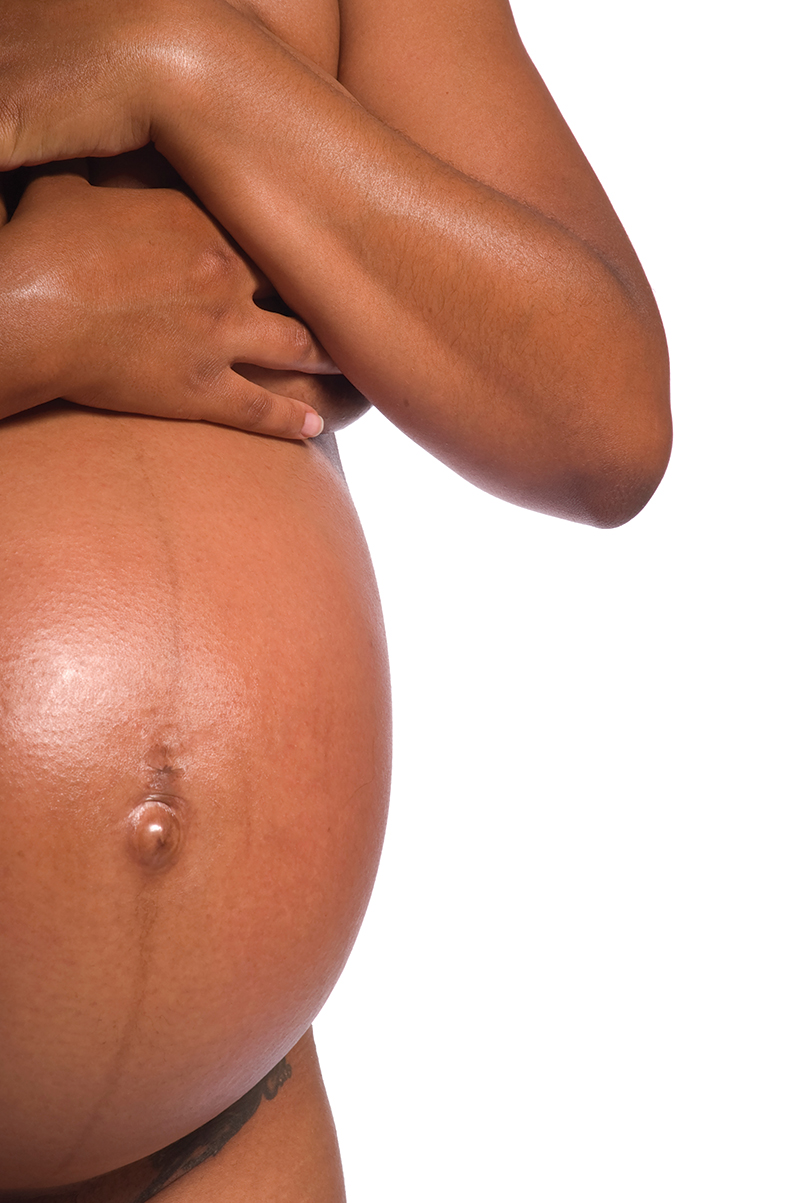 Julia Lacy is a birth doula and a self-described “pregnancy junkie” who reads everything she can find on the topic. The Kirkland mother of two was familiar with pregnancy-related skin conditions before the birth of her first child, and this helped her navigate what came next.
Julia Lacy is a birth doula and a self-described “pregnancy junkie” who reads everything she can find on the topic. The Kirkland mother of two was familiar with pregnancy-related skin conditions before the birth of her first child, and this helped her navigate what came next.
“I basically had every skin side effect in the book,” says Lacy. “I had varicose veins, stretch marks from breast to knee, my hair and skin completely changed texture, dandruff and dry skin, and I had a bit of acne.”
Lacy was also diagnosed with pruritic urticarial papules and plaques of pregnancy (PUPPP), an uncommon and exceptionally uncomfortable condition characterized by itchy breakouts that start in stretch marks.
“I’d say that at least 75 percent of women have some skin changes during pregnancy,” says Tanya Sorensen, M.D., a maternal and fetal medicine specialist at Swedish Medical Center. “You can see changes even at the start of a pregnancy, but as hormones become more active, skin issues become more noticeable during the second and third trimesters.”
“It’s important to be an active patient and take the reins. Get information up front, ask questions and do your research,” says Lacy. “Pregnancy is a formative and pivotal journey that shouldn’t be a negative experience. Whether it’s a small inconvenience or a major medical issue, address it if you can.”
Pigmentation
“The first thing that happens to almost everybody are pigment changes,” says Renata Jenkin, M.D., a dermatologist at University of Washington Medicine Eastside Specialty Clinic.
Skin commonly darkens around the nipples, thighs and neck, as do existing freckles and moles. The linea nigra (a dark vertical line running from the navel to the pubic bone) also tends to become more prominent.
Many women experience chloasma, also known as “mask of pregnancy.” It often shows as brown patches on sun-exposed areas, such as the cheeks, nose, forehead and upper lip. According to the National Institutes of Health, 50–70 percent of pregnant women are impacted.
Sun exposure makes pigmentation issues worse for everyone, pregnant or not. Higher estrogen levels during pregnancy intensify sunburns and may result in increased skin damage, Sorensen explains.
“Sunscreen is always a great idea. The safest ones to use during pregnancy are the physical sunscreens that sit on the skin and reflect light. They use titanium and zinc oxide, without some of the other chemicals,” says Jenkin.
Most pigmentation issues are not dangerous and typically subside within a year after giving birth.
Vascular
Blood volume and circulation increase during pregnancy, which can lead to minor symptoms such as flushing and red palms. Spider and varicose veins are caused by a combination of circulation, genetics and hormones.
“Spider veins are partially estrogen stimulated. It looks like fine lines spreading out from a point on the skin. It happens more often during the second trimester, and typically they go away after delivery,” says Sorensen.
Varicose veins can be much more problematic. They frequently appear on the back of the legs, sometimes running from the pelvic area down. As blood collects, the veins bulge and swell painfully. “Mine practically exploded during my second pregnancy,” says Lacy. “My legs were absolutely aching, and I finally asked for a prescription for compression stockings, which helped.”
“For long-term treatment, [varicose veins] can be treated with lasers,” says Jenkin, adding that doctors usually advise doing this after your final birth, because varicose veins may come back during subsequent pregnancies.
Stretch marks and acne
Two of the most familiar and feared skin conditions, stretch marks and facial acne, are also the hardest to predict and prevent.
“We can’t explain why stretch marks happen. It’s mostly genetic and hormonal. If your mother was prone to them, you likely are, too,” says Jenkin. “About 80 percent of women have some stretch marks. It has nothing to do with the size of the baby or the mother.”
“There is nothing that’s reliably been proven to prevent stretch marks,” says Sorensen. “There have been some promising studies regarding topical vitamin E, but it’s not scientifically proven.”
The causes of pregnancy-related acne are also a mystery. Women previously prone to acne may find that their skin clears up, while others experience flare-ups for the first time. Jenkin estimates that 50 percent of pregnant women get acne, and most of it disappears after birth.
Consult a doctor before starting a treatment regimen. Even some over-the-counter or natural treatments for acne contain ingredients that can harm fetuses.
“Some doctors provide a sheet of acceptable medicines from the start,” says Sorensen. “Even though most over-the-counter products are fine, some — including acne treatments containing retinoic acid — can be dangerous.”
Severe skin conditions
While rarer, some conditions require immediate medical attention. For example, PUPPP escalates quickly. It usually presents during the third trimester and resolves itself after birth, but severe itching can lead to long-term scarring.
“It crept up on me in the last two to three weeks of my pregnancy,” says Lacy. “I brought it up to my obstetrician, who wrote it off as just being stretch marks. It turned into a complete belly rash, and I was dying of itching before seeing a dermatologist who prescribed topical steroids.”
Both Jenkin and Sorensen advise women to seek medical intervention for any condition that quickly worsens and/or causes discomfort and pain. Anything resembling a blister or lesion needs immediate evaluation.
“Another relatively rare skin condition is pemphigoid gestationis. It’s an autoimmune issue, not a virus, and creates chicken pox–looking blisters and intense itching. You should definitely talk to a doctor if that occurs,” says Sorensen.
Cholestasis of pregnancy results in acute itching of the hands, feet and other body parts. According to Sorensen, it may have a negative impact on the placenta if left untreated. The condition requires medical monitoring and sometimes early delivery.











